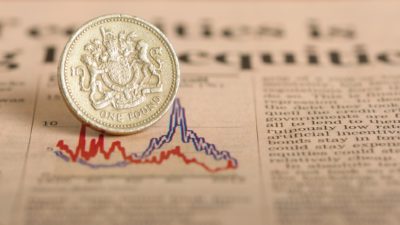It’s been nearly 15 years since the Lloyds Banking Group (LSE:LLOY) share price closed above £1. On 11 December 2008, I don’t think many investors would have predicted that the stock would today be changing hands for around 42p.
Given that the bank’s shares last reached 50p in March 2023 — and 60p in January 2020 — it might seem a little optimistic to be discussing a return to £1.
But as a shareholder, I’ve a vested interest in the stock reaching this level once more.
Different times
Lloyds had an awful 2008 and 2009. As a result of the global financial crisis and the disastrous takeover of HBOS, its share price crashed by 83%.
In 2009, it had to raise more money following a decision to impair nearly £17bn of bad loans. And yet the bank closed the year with a market cap of £32bn.
That’s £5bn more than its current stock market valuation!
New rules
But the biggest change over the past 15 years has been the tightening of the regulatory environment. The rules on capital requirements are far stricter.
One of the key measures of a bank’s financial strength is its tier 1 capital ratio. This is equity plus reserves expressed as a percentage of assets. At the end of 2009, Lloyds was 9.6%, compared to 17.1% at 31 December 2022.
The benefit of this is that it’s now more financially secure. But it’s unable to lend as much as previously, which means its earnings are lower.
However, the biggest advantage for shareholders is that we are less likely to see a repeat of the banking crisis. As a risk-averse investor, I take great comfort from this.
Looking to the future
For Lloyds shares to be valued at £1, it needs to have a stock market valuation of £63.5bn.
A popular way of measuring the intrinsic value of banking stocks is using the price-to-book (P/B) ratio. This compares market cap with the underlying book (accounting) value. According to analysts at McKinsey & Co, the global average for traditional retail banks is 0.8.
Lloyds’ latest balance sheet — at 30 June 2023 — shows equity of £44.5bn. Using the global P/B average implies a valuation of £35.6bn, a 32% premium to today’s market cap.
Or, put another way, it suggests 54p a share is reasonable.
Of course there’s no such thing as an average bank. Each operates in different markets and must cope with a variety of local challenges. Lloyds derives nearly all of its revenue from the UK, which means its earnings (and share price) will fluctuate in line with the British economy.
On 25 September 2023, KPMG released a gloomy assessment forecasting domestic growth of 0.3% in 2023, and 0.4% in 2024. For perspective, the average annual growth rate, from 2000 to 2022, was 1.7%.
Verdict
So I don’t think Lloyds’ shares will reach £1 any time soon.
But as frustrated as I am at the lack of upwards movement in the share price, I’m not going to sell.
I like that fact that Lloyds pays an above-average dividend. I’m expecting a payout of at least 2.75p a share this year. If correct, the stock is presently yielding over 6%.
That’s far more than Lloyds pays on any of its savings accounts.








